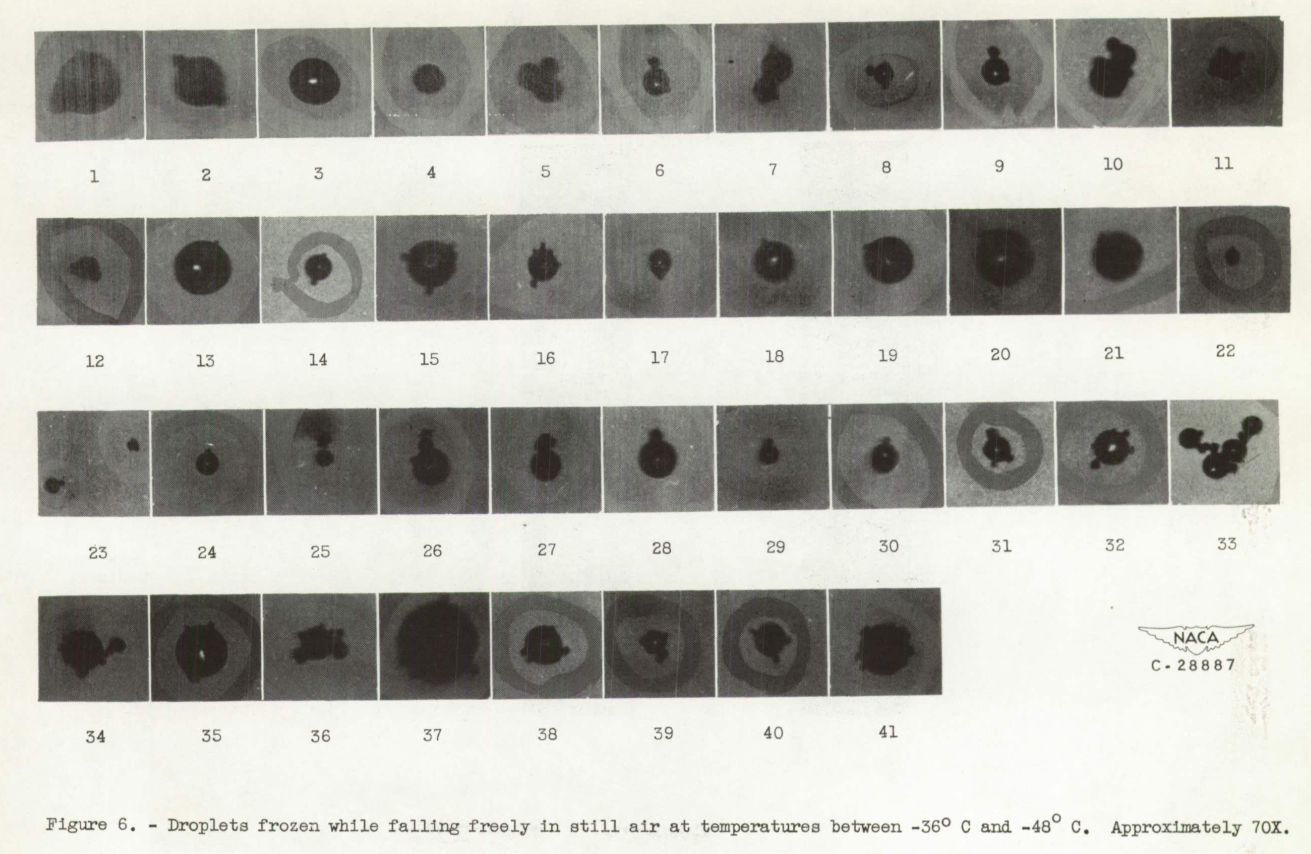"Although many important advances have been made in the control of ice formation on aircraft in flight, little progress has been made toward an understanding of the fundamental processes involved in the formation of ice or the prediction of such formation."

From NACA-RM-E51L17.
Introduction
There was limited data for properties of liquid water below the temperature of 0° C (supercooled water) at the start of the NACA-era. The five studies reviewed here sought to improve the data available.
The authors were well-informed of other studies available at the time. New instruments were conceived and built for these studies.
These five studies largely considered water drops, although much of the data are also applicable to more general aircraft icing analysis.
Four of the studies concern the temperature at which supercooled water drops will spontaneously freeze (freeze without outside influence other than temperature).
Several of the studies note similarities of the properties of supercooled water and ice.
These five publications reviewed here are from the seven publications listed in the "Fundamental Properties of Water" section of 132 publications in "The Historical Selected Bibliography of NACA-NASA Aircraft Icing Publications". The two other studies have been reviewed previously, as noted below.
- Hardy, J. K.: Kinetic Temperature of Wet Surfaces A Method of Calculating the Amount of Alcohol Required to Prevent Ice, and the Derivation of the Psychrometric Equation. NACA-ARR-5G13, 1945. ntrs.nasa.gov
> previous review: NACA-ARR-5G13 - Lowell, Herman H.: Maximum Evaporation Rates of Water Droplets Approaching Obstacles the Atmosphere under Icing Conditions. NACA-TN-3024, 1953 ntrs.nasa.gov
> Previous review: NACA-TN-3024, NACA-TN-3024 Evaporation
Reviews
-
NACA-TN-2142 "Photomicrographic Investigation of Spontaneous Freezing Temperatures of Supercooled Water Droplets"
"Although supercooled water has been observed and reported for over two centuries, considerable disagreement exists as to the degree of supercooling possible and the factors that influence supercooling
-
NACA-TN-2234 "Statistical Explanation of Spontaneous Freezing of Water Droplets"
"very few supercooled droplets exist at temperatures lower than -35° C and the existence of an icing cloud at such low temperatures is probably an unusual occurrence"
-
NACA-TN-2510 "Experimental Values of the Surface Tension of Supercooled Water"
"a need has arisen for a more complete understanding of the physical properties of supercooled water because few of the physical properties of water have been investigated at temperatures much below 0° C"
-
NACA-TN-2532 "X-Ray Diffraction Study of the Internal Structure of Supercooled Water"
"supercooled water was concluded to become progressively more ice-like as the temperature is lowered"
-
NACA-RM-E51L17 "A Photographic Study of Freezing of Water Droplets Falling Freely in Air"
"complete knowledge of the physical conditions under which supercooled clouds may exist, and the factors that cause a supercooled cloud to transform to an ice-crystal cloud is necessary"
Related
See also the Meteorology of Icing Clouds Thread.